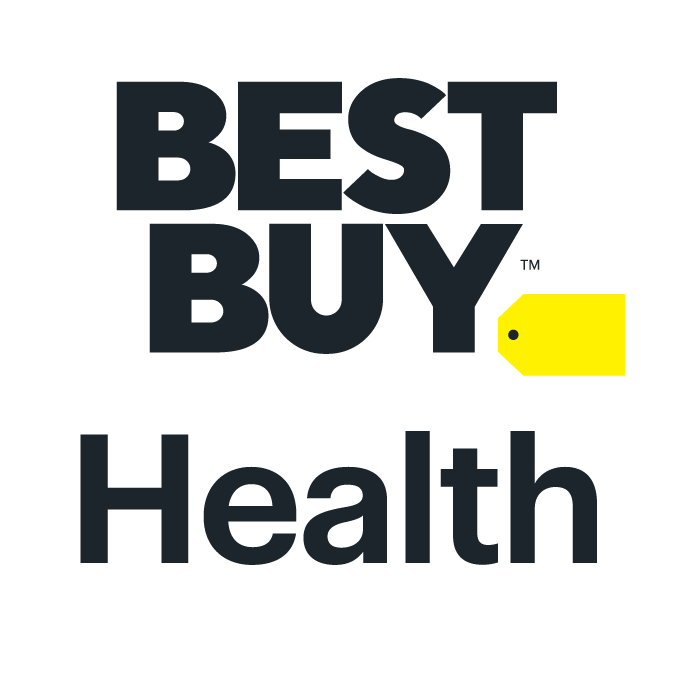
Hearing With Empathy
Research-driven redesign of Best Buy’s hearing aid shopping experience.
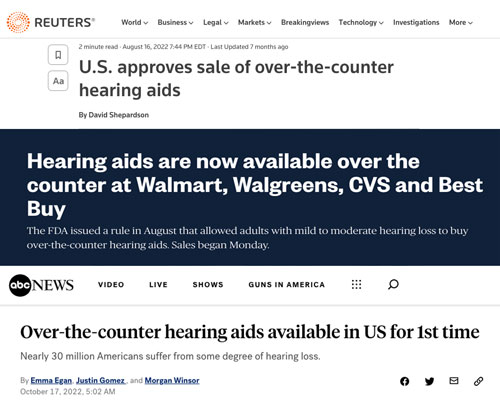
Problem Statement and Goals
The FDA was about to allow the purchase of hearing aids "over the counter," and our team was tasked with designing the purchase flow for BestBuy.com.
I wanted to ensure that we considered the human needs first and answered important questions such as what it's like to lose your hearing, or maybe never have it. Also, what triggers the final action to go shopping for a hearing aid?
These questions (and many more) would all help us understand what customers really need while shopping for a hearing aid.
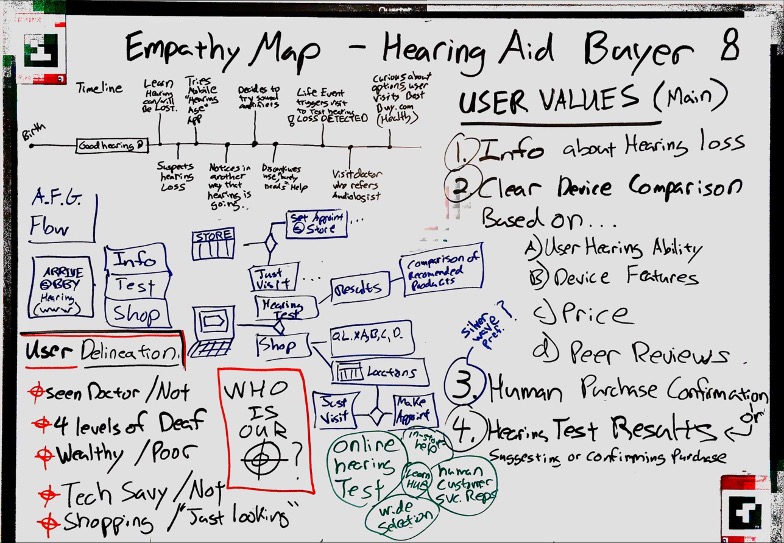
My Role and Team
As a UX Designer, my role included conducting research, gathering data, and designing a purchase flow for BestBuy.com that addressed the human needs of customers who purchase hearing aids.
I worked closely with our stake-holders and development team, as well as Legal, Research, Medical, Marketing, and service partners, to ensure design continuity of our shared vision in the final product.

Research and Insights
I conducted competitive analysis and quantitative survey research to gather data and reported my findings to our team's leadership to share the long path that people take to purchase hearing devices.
We found that one of the most helpful processes for the hearing aid purchase decision (hearing test at an audiologist office) was a serious hindrance, we strongly suggested that the hearing check be an integral part of the hearing aid purchase flow.
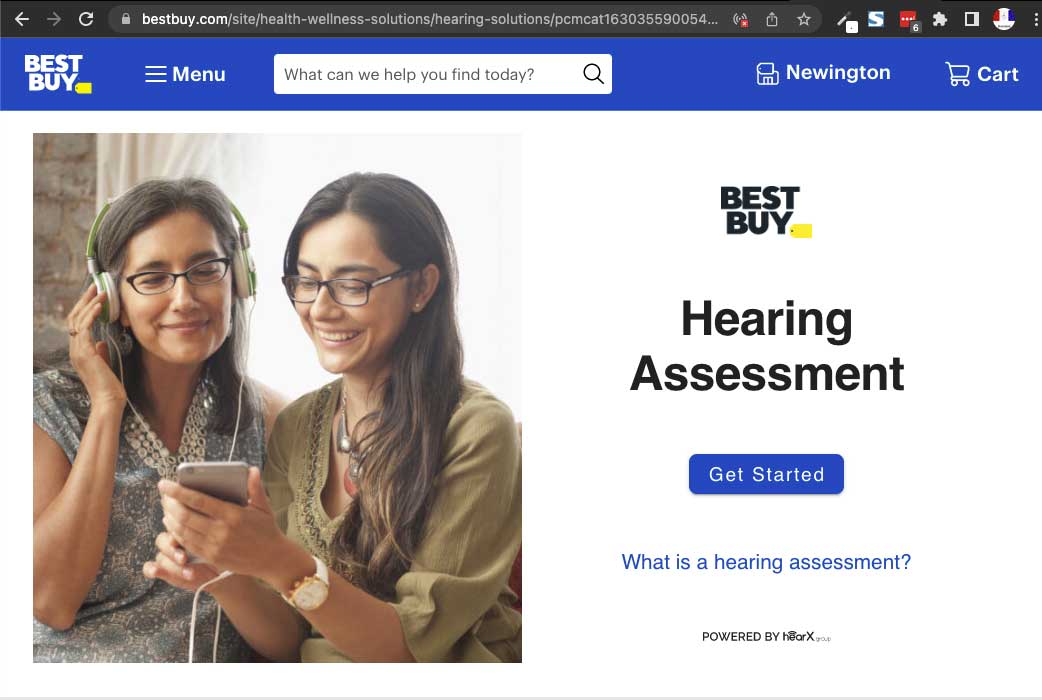
Project Outcome
This online hearing test solution removed the largest barrier (going to an audiologist) and the test results suggest the best hearing aid for your hearing range. Although Best Buy couldn't make hearing aids free, we were able to provide a more customer-focused solution by addressing the human needs of our customers who purchase hearing aids.

Geek Squad Triage Tool
AI-powered diagnostics tool for faster and more accurate Geek Squad repairs.
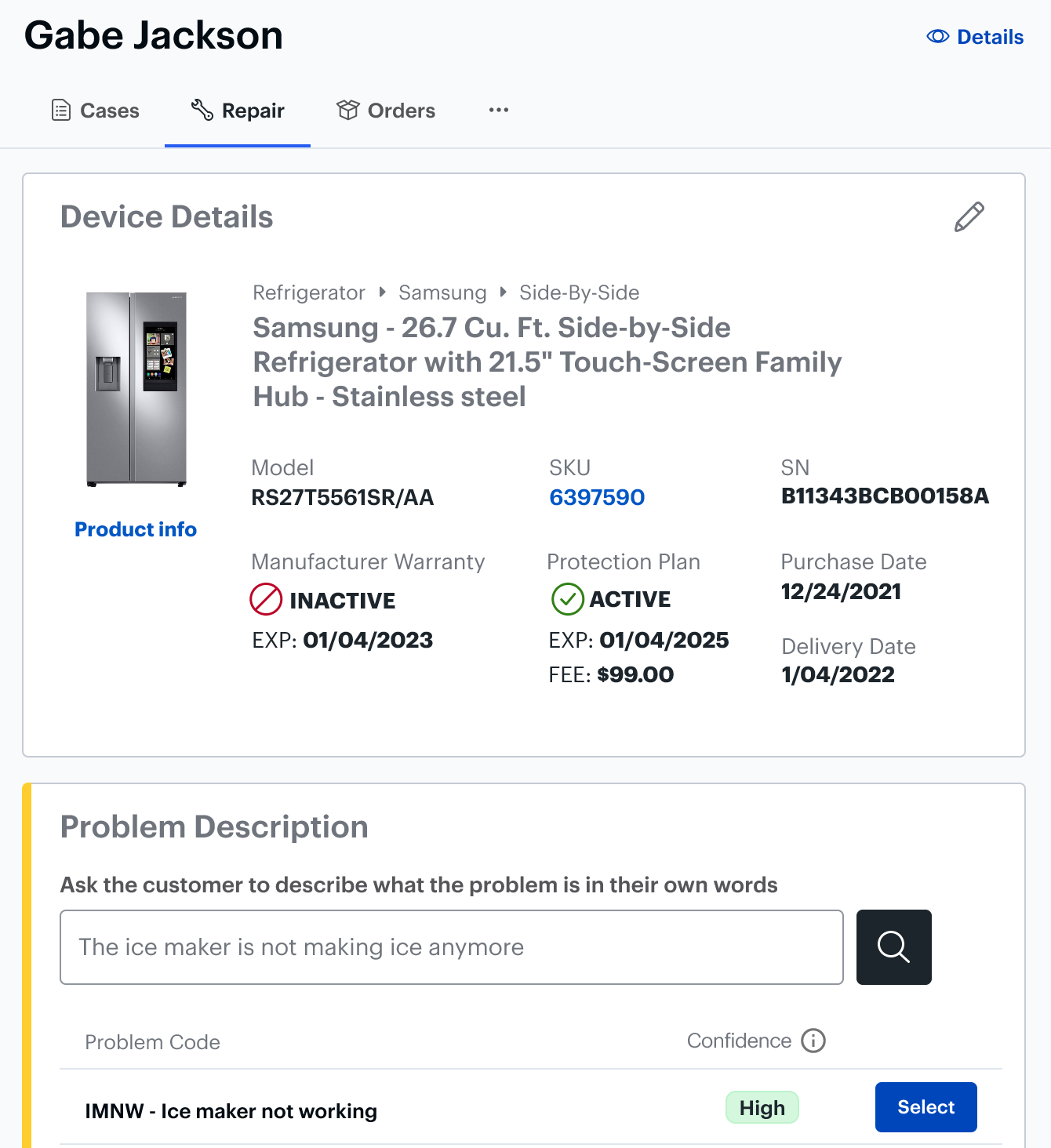
Problem Statement and Goals
Geek Squad needed a solution to reduce errors during initial diagnostics and improve repair efficiency across their team. The primary goal was to design an AI-driven triage tool that would assist technicians in diagnosing issues, ordering parts, and minimizing unnecessary repair trips.
Our challenge extended beyond interface design. It involved crafting and testing conversational experiences with AI and machine learning models, using LLM's and NLP. These conversations needed to feel natural and intuitive while providing technicians with accurate, actionable insights. Integrating these cutting-edge technologies into their sales-order tool was essential for achieving seamless workflows and measurable improvements in repair outcomes.
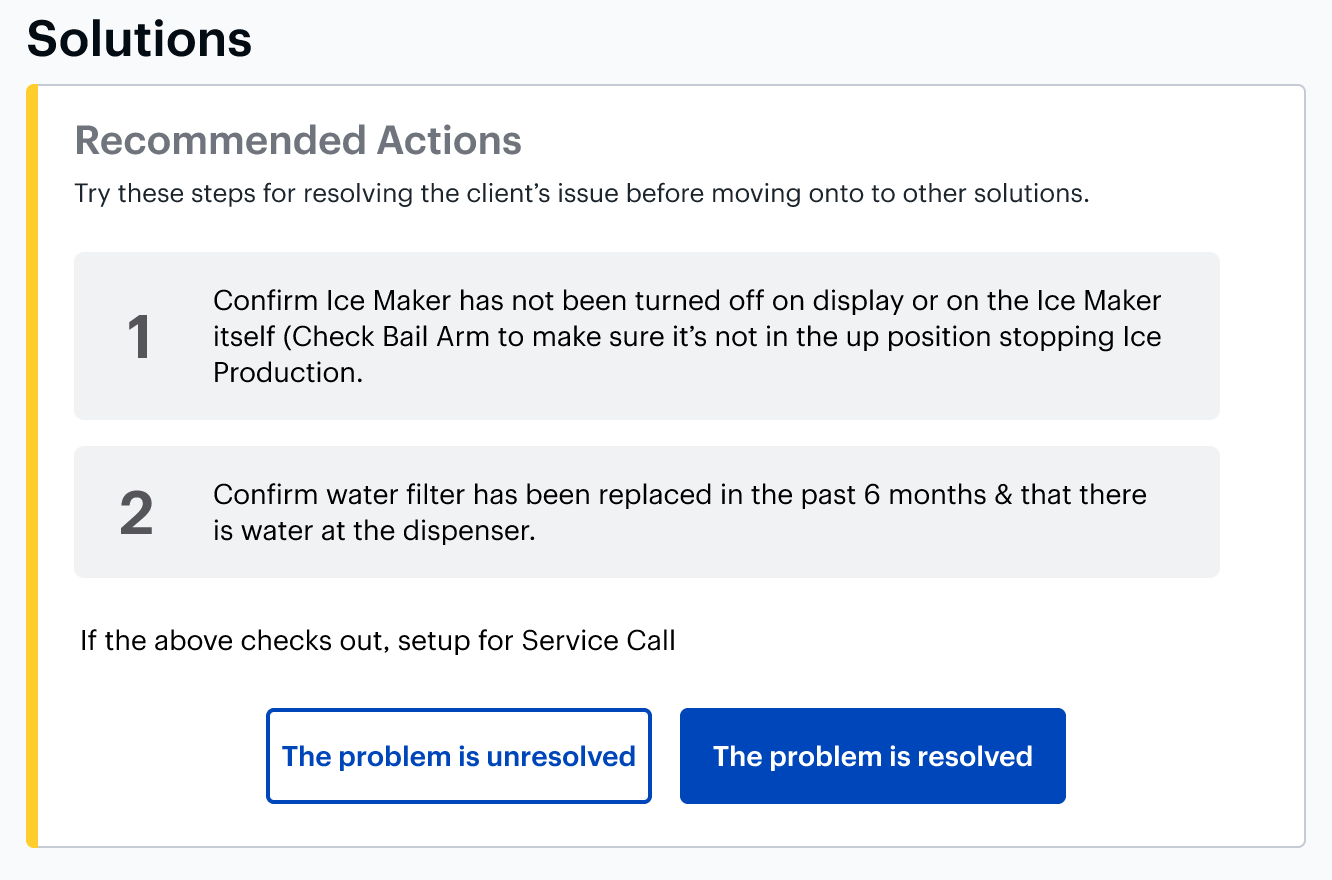
My Role and Team
As the UX Designer, I worked closely with product managers, engineers, and technicians to ensure the tool met real-world needs. My responsibilities included conducting interviews with Geek Squad employees, identifying pain points, designing the user interface, and building prototypes for usability testing.
Our cross-functional team collaborated to refine the tool based on user feedback, ensuring the final product was both effective and easy to use.
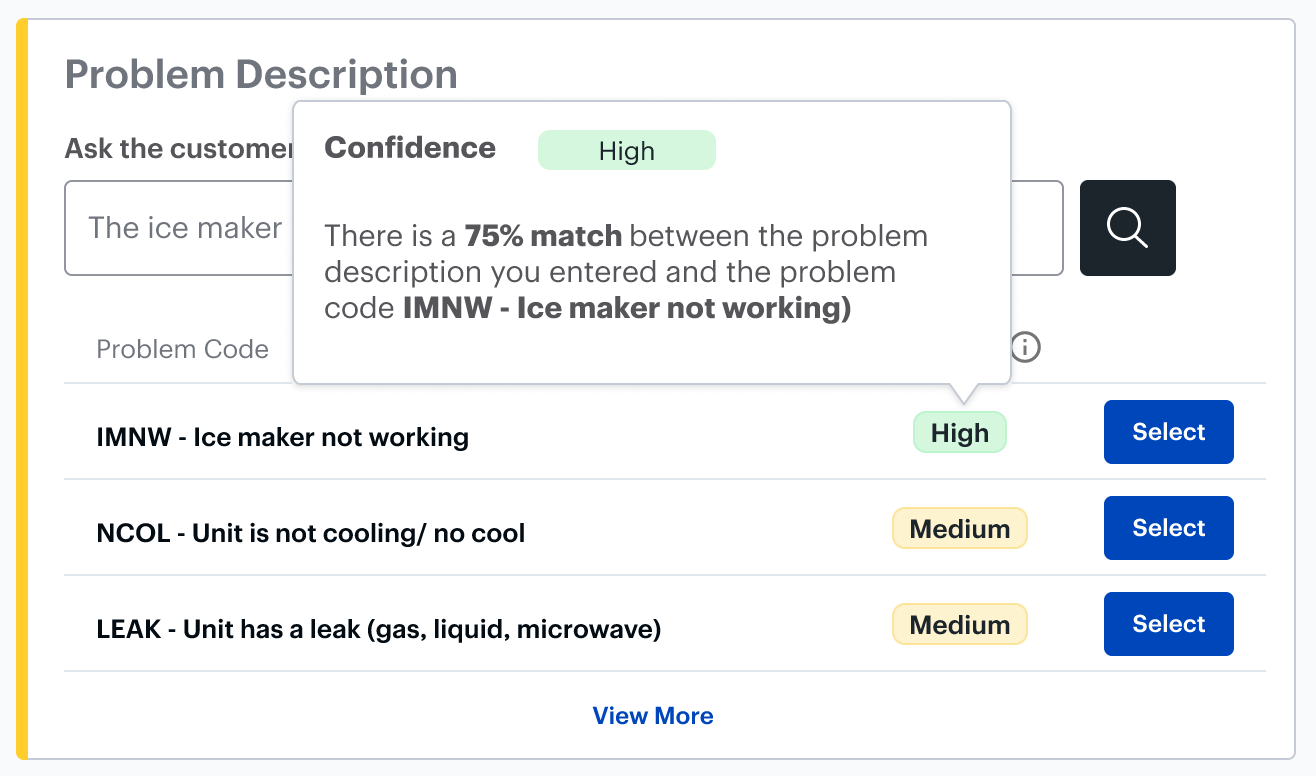
Research and Insights
We conducted interviews with technicians and observed their workflows to identify inefficiencies in the diagnostic process. One key insight was that technicians often struggled to identify the exact parts needed for repairs, leading to delays and extra costs.
We leveraged this feedback to design an AI-powered Q&A system that guided technicians through a step-by-step diagnostic process, ensuring accurate part identification and issue assessment.
Project Outcome
The AI-enabled triage tool significantly reduced diagnostic errors and unnecessary part orders. Technicians reported a 35% improvement in efficiency, while customers experienced faster repair times and greater satisfaction.
The tool was successfully rolled out across multiple locations, becoming a key component of Geek Squad's service strategy. This project showcased the power of combining AI with human-centered design to create impactful solutions.
AI-Powered COVID Detection
Hands-free AI-driven COVID detection for hospitals and medical staff.
Problem Statement and Goals
During the COVID crisis, hospitals were understaffed and overrun with patients. Our team of scientists and professionals was tasked with finding a solution to improve the survival of more patients and make the lives of medical professionals easier.
What lead us to believe we could help was the many technology patents we held for using artificial intelligence and sensors to classify living objects and their condition.
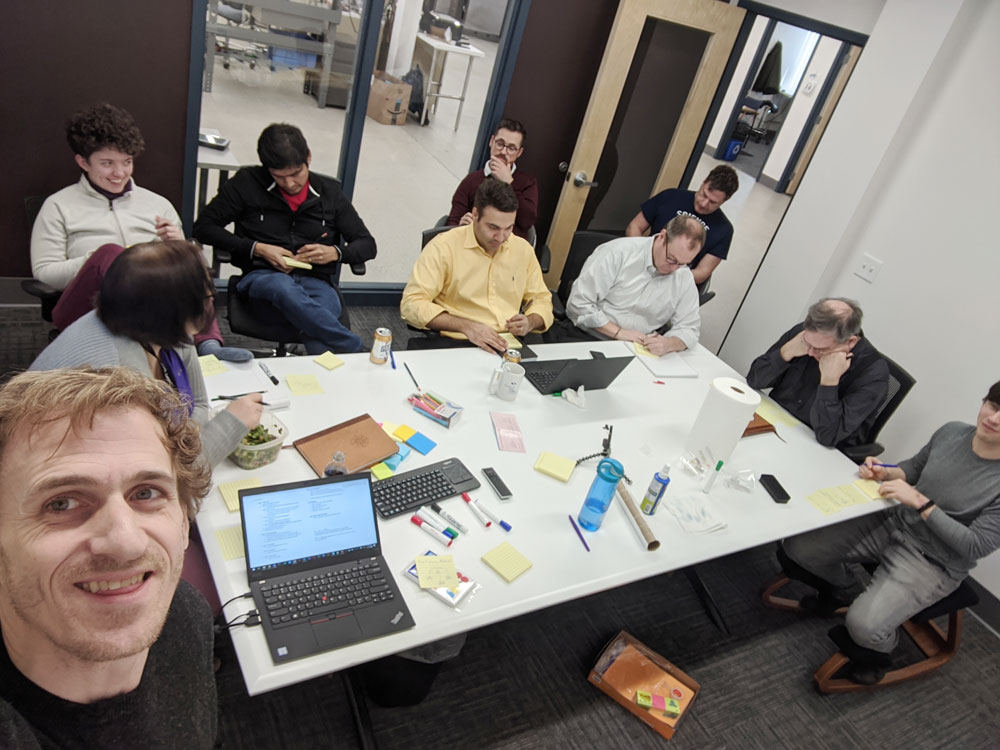
My Role and Team
As Director of Product Experience, I lead design sprints, workshops and presentations with a multidisciplinary group of leaders from hardware, software, Medical, and Legal teams.
I also directed and conducted user research. Then designed interactions and interfaces for Doppler radar and 3D environments and consulted with technology peers to translate complicated computer processes to non-technical users.
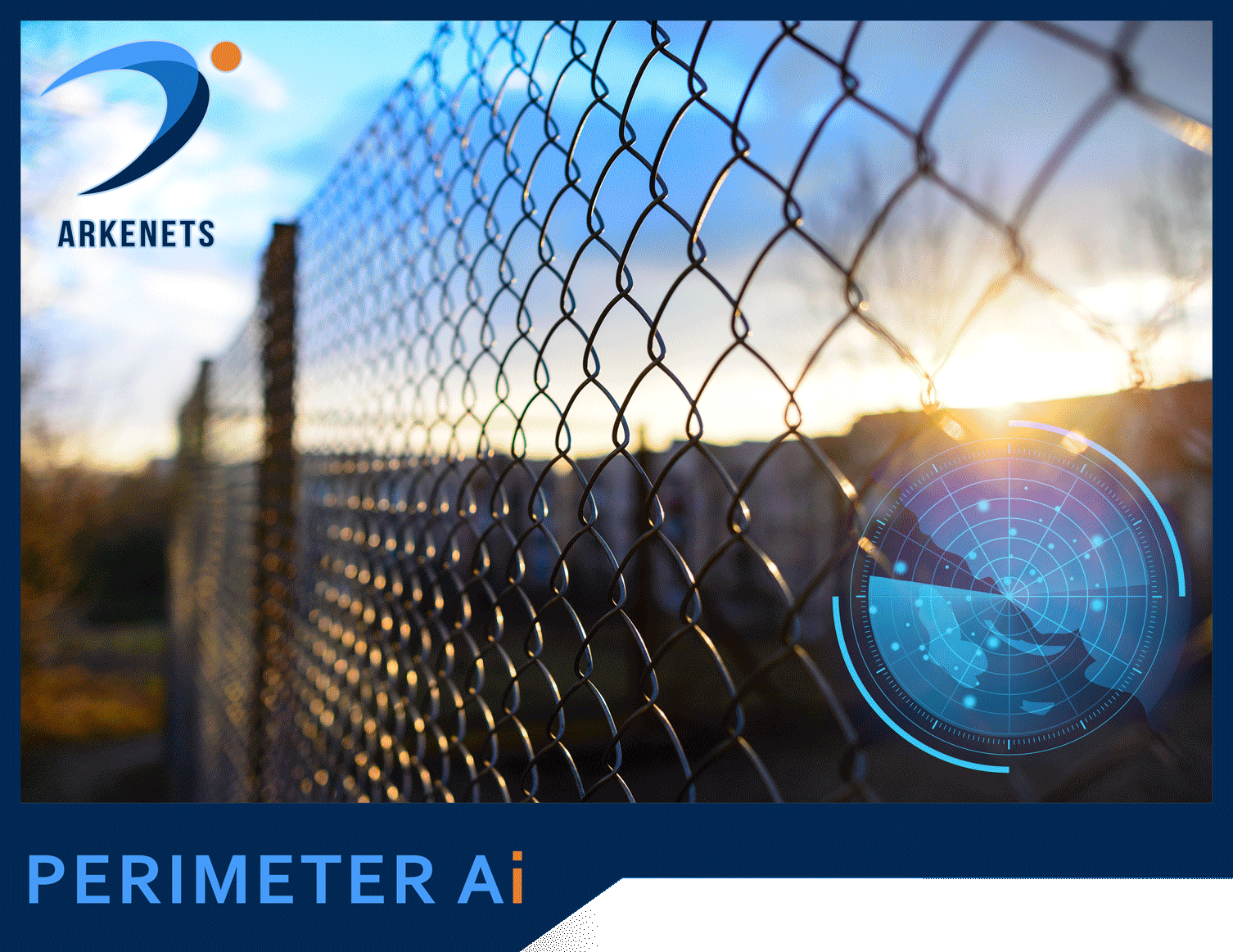
Research and Insights
Shifting our efforts from being product-focused to being human-centered, we researched how other industries use similar technologies for monitoring human activity.
Then we dove into to the lives of Medical Professionals and COVID Patients to understand their environments, hurdles, and often make-shift solutions.
We were passionately driven to see how our research findings, algorithms, sensors, and other patented code, could help in this pressing time.
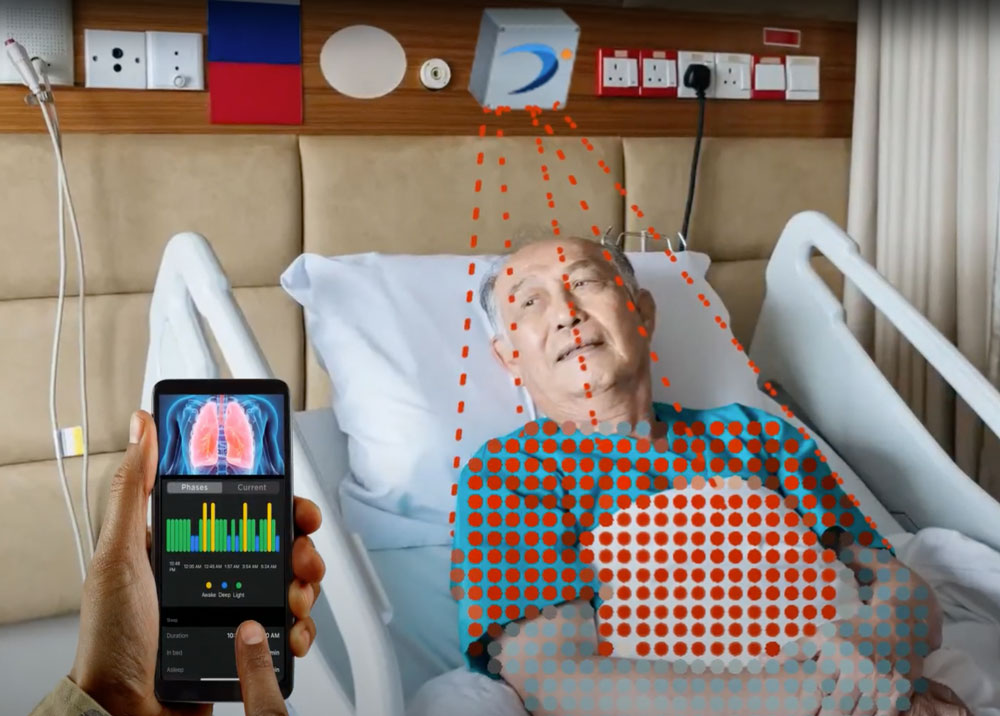
Project Outcome
After hundreds hours of research, a few dozen more patents, and a bunch of design sprints, we landed on a solution.
Hands-Free COVID Detection and Monitoring.
By coupling AI and machine learning with a range of sensors, our solution could make informed suggestions and serve up timely alerts for multiple patients without human supervision.
This meant a much higher chance of survival for patients in hospitals, and it addressed the urgent need for medical professionals to have reliable support during the COVID crisis. I'm so proud to have been a part of this advancement.
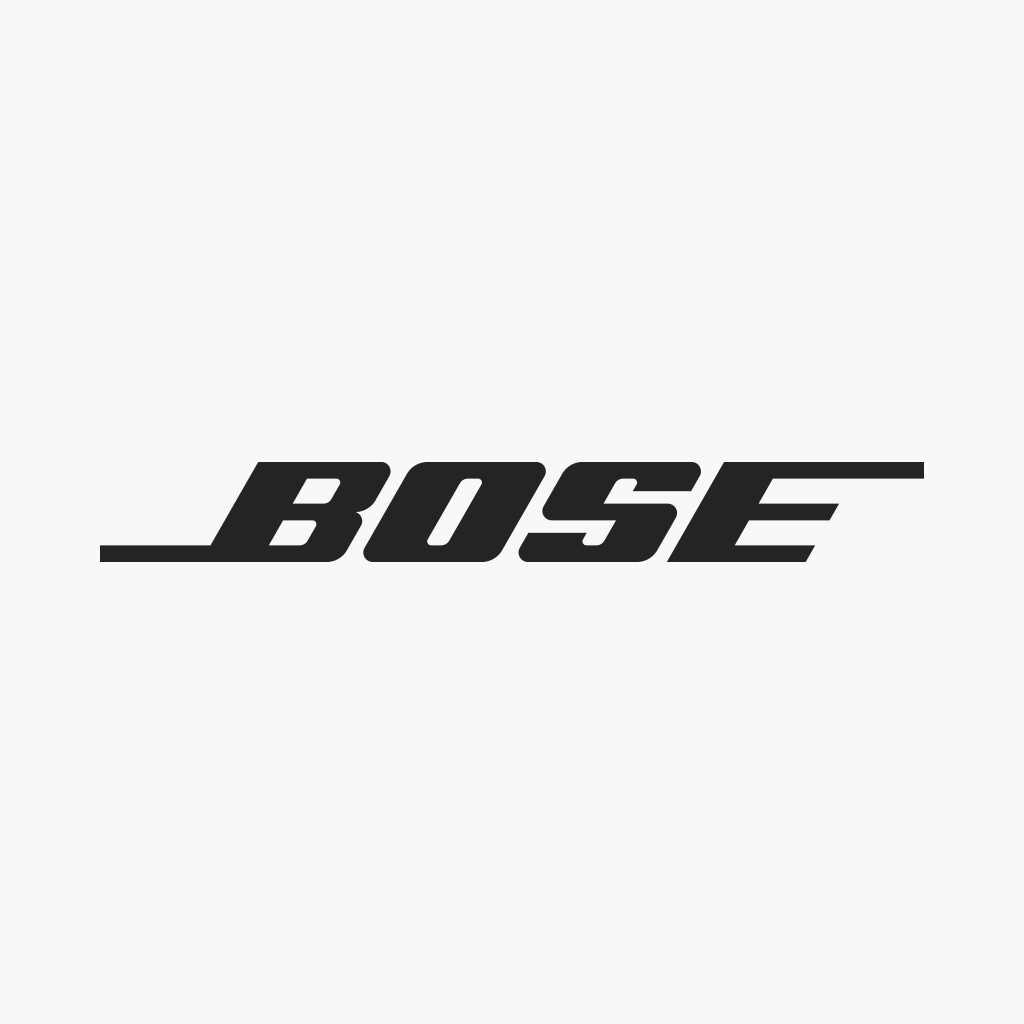
Bose Baby Monitor
Exploring how Bose can support new parents through smart technology.
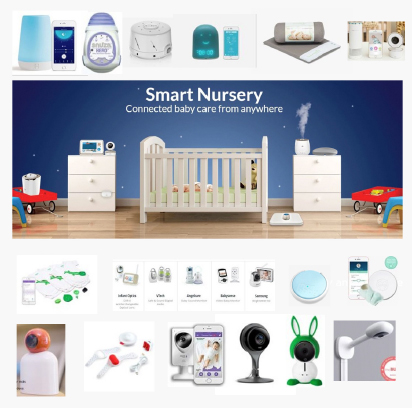
Problem Statement and Goals
Bose was exploring opportunities to expand its smart speaker ecosystem into family-focused products. Our team was tasked with designing a baby monitor, but before diving into solutions, we conducted R&D to understand the real needs of young families.
We focused on identifying the "Jobs To Be Done": What parents truly needed and how Bose could fit into their daily lives. Was monitoring a baby the primary job families would hire Bose for, or were there deeper needs that existing solutions failed to address? We were about to find out.

My Role and Team
As the UX Designer, I worked alongside an innovation lead, a researcher, and a technologist. Each of us led activities within our disciplines while collaborating across all four work streams.
I contributed by building clickable prototypes, drafting interview questions, synthesizing research findings, and exploring emerging technologies alongside our technologist.
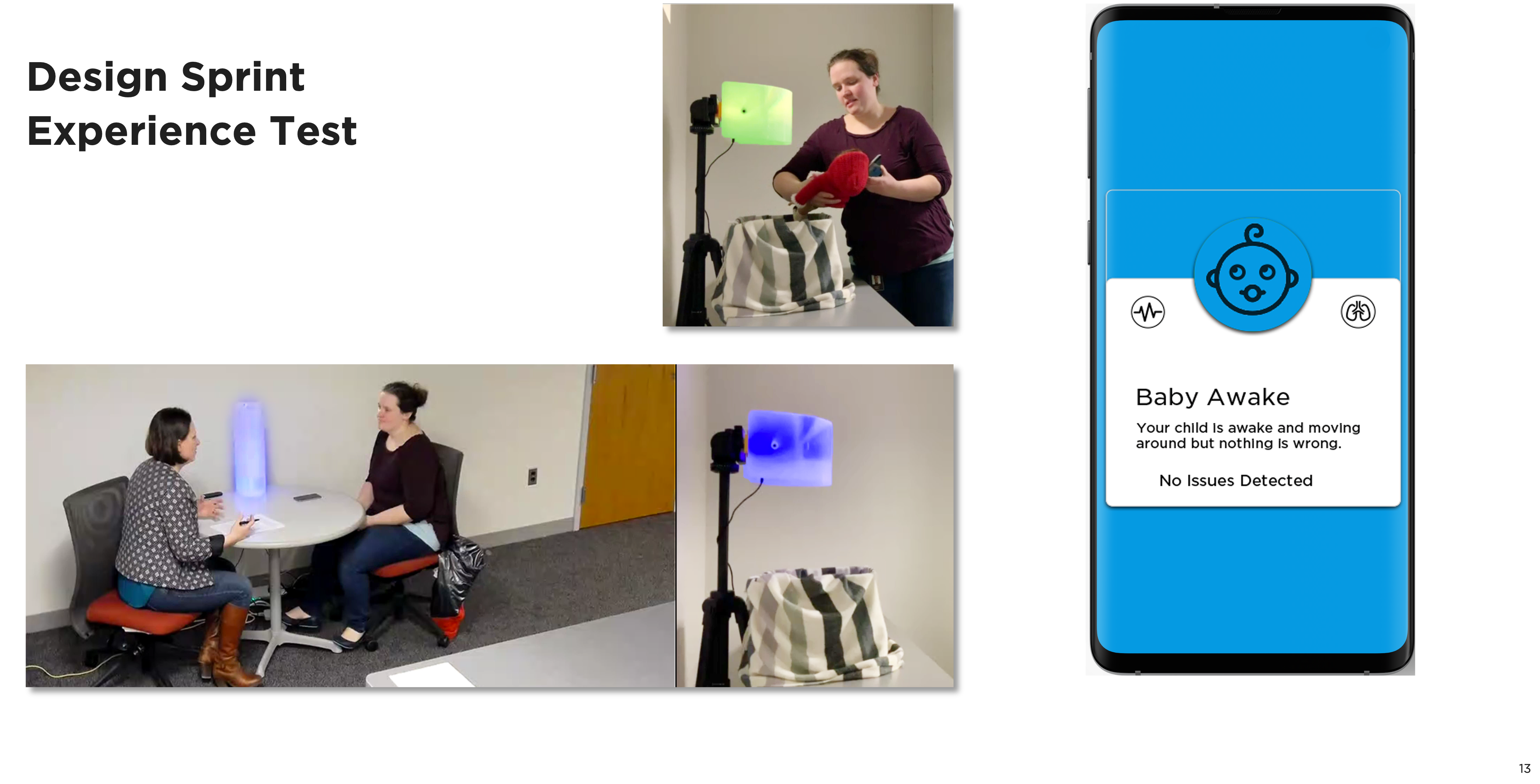
Research and Insights
To ensure a comprehensive understanding of our users, we ran three parallel research efforts:
- A six-month qualitative ethnographic study
- A three-month quantitative "Video Journal" study
- A series of one-week design sprints to rapidly test and iterate on emerging insights
This research approach allowed us to identify trends in real time and adjust our design direction accordingly. We discovered that sleep deprivation wasn’t just a challenge for babies—it affected the entire family. This insight shifted our focus from simple monitoring to solutions that improved sleep quality for everyone in the household.
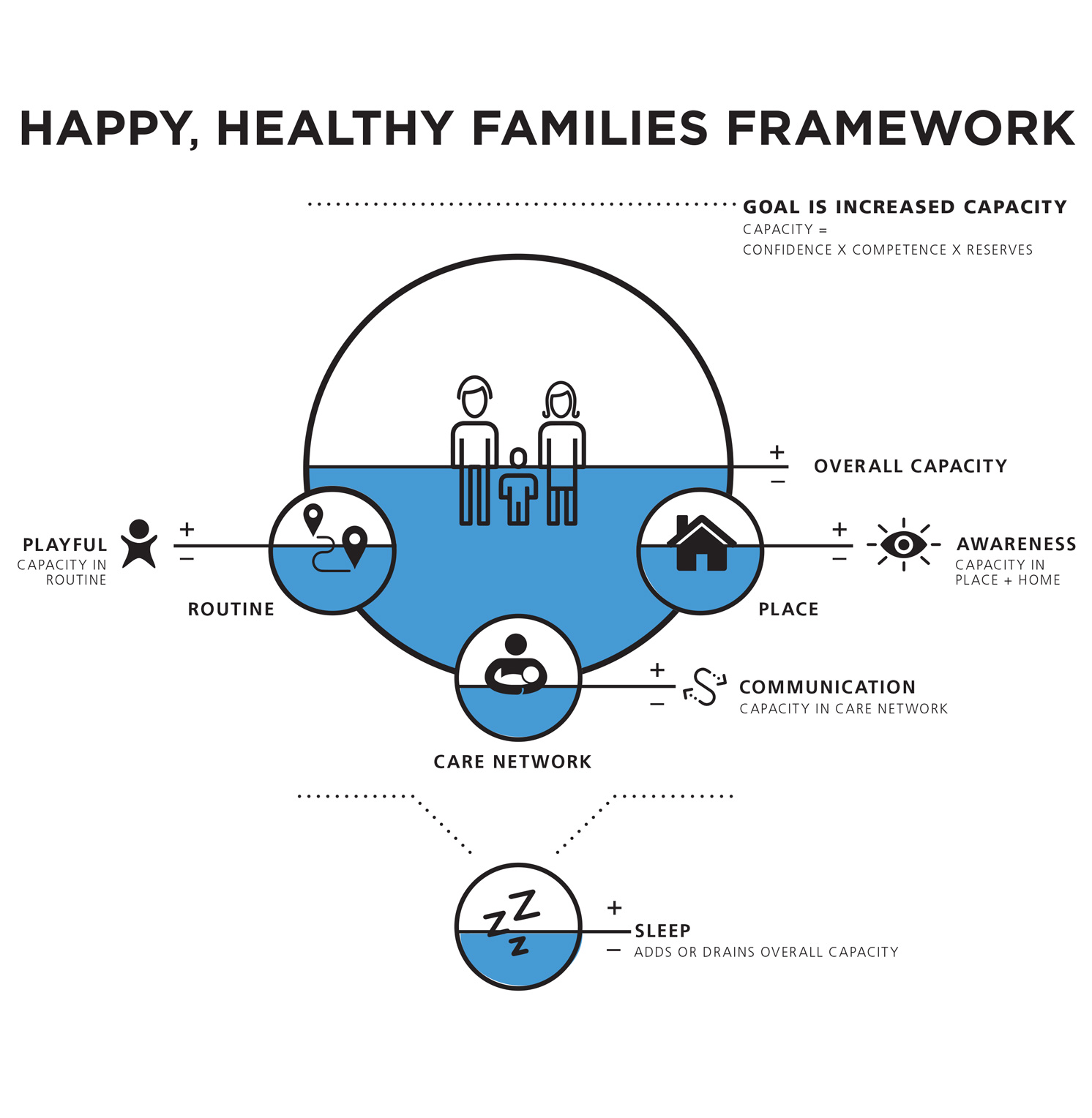
Project Outcome
Building on existing Bose products, we designed a sleep system that played soothing sounds for parents while ensuring they were alerted when their baby needed attention. The system also tracked whose turn it was to wake up, reducing sleep disruptions and supporting shared parenting responsibilities.
By focusing on the actual needs of young families, we provided Bose with a more customer-centered approach, leading to a solution that differentiated itself from traditional baby monitors on the market.